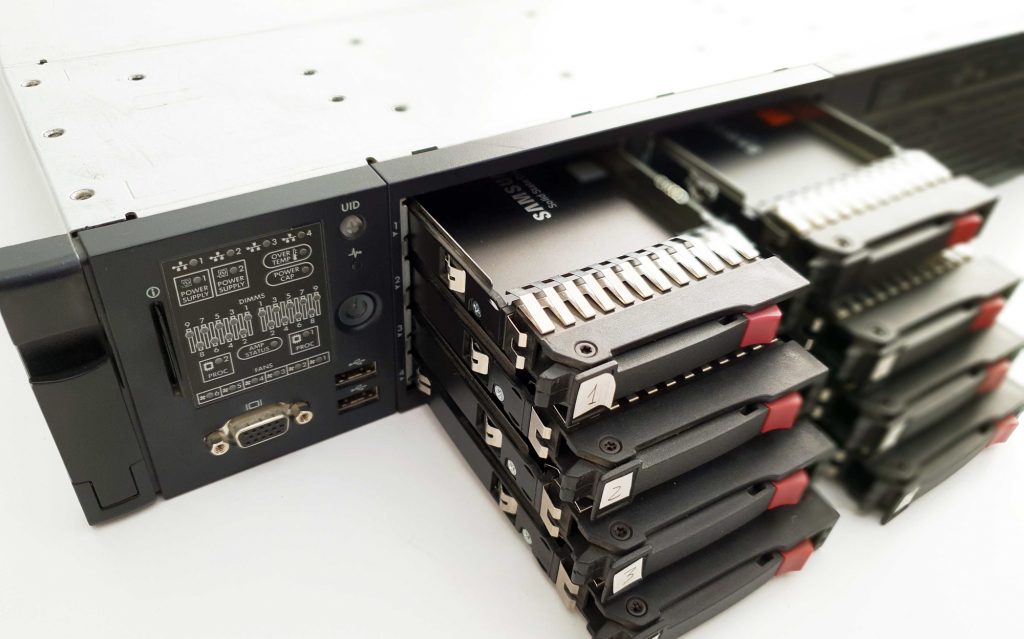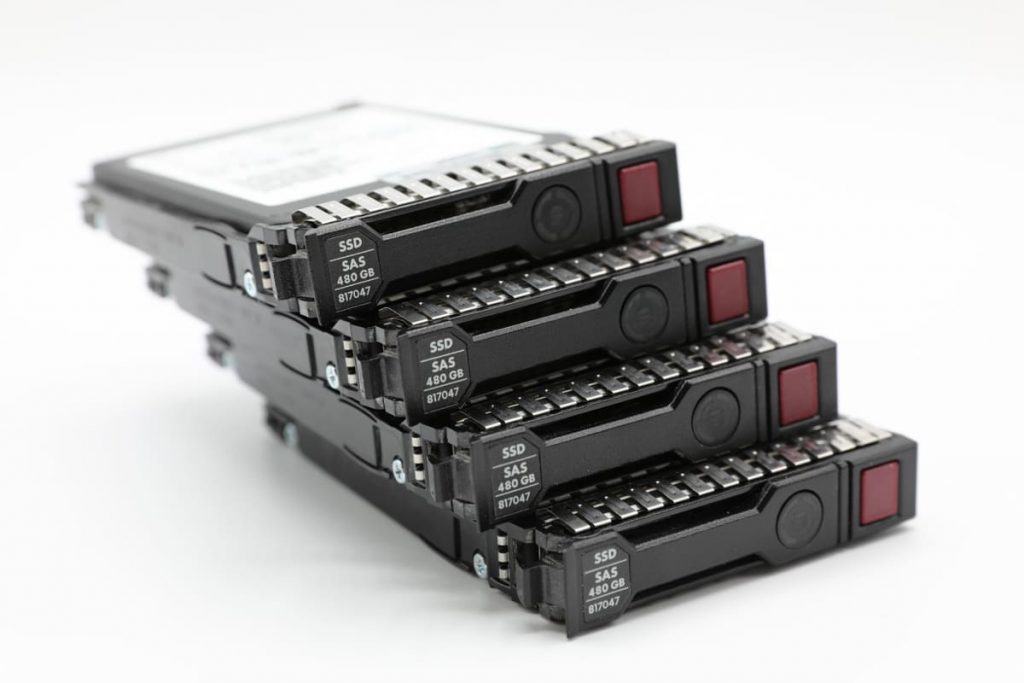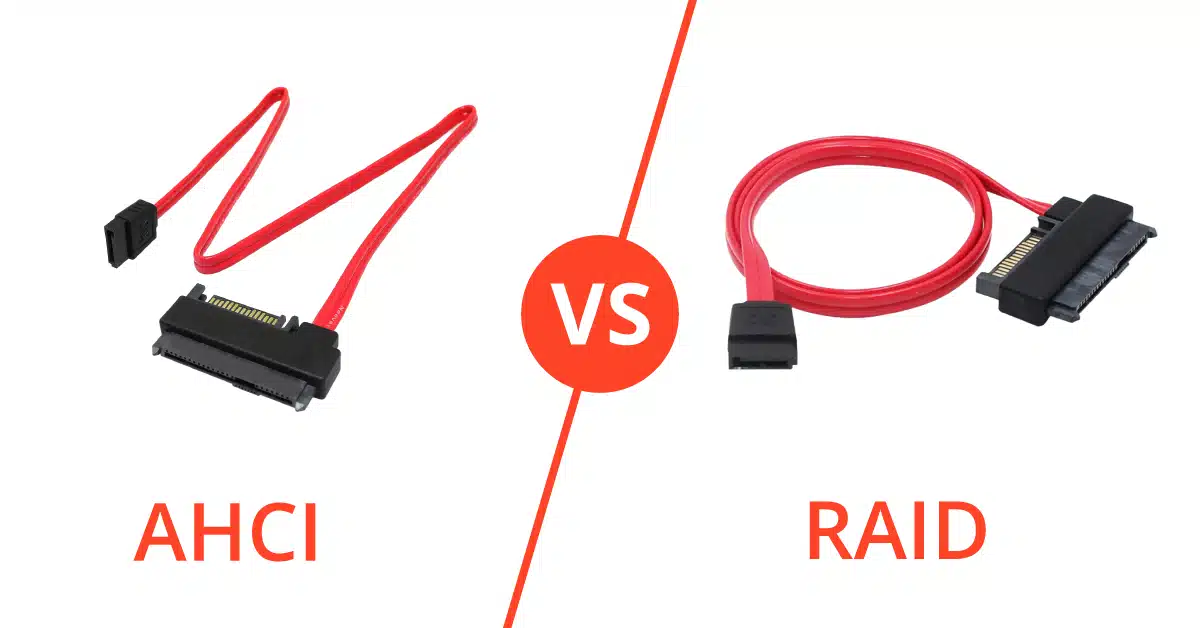In the world of storage technologies, AHCI (Advanced Host Controller Interface) and RAID (Redundant Array of Independent Disks) are two commonly discussed options. Both AHCI and RAID play crucial roles in enhancing storage performance and data protection. In this blog post, we will explore the differences, advantages, and disadvantages of AHCI and RAID, and help you make an informed decision when it comes to choosing the right storage technology for your needs.
What is AHCI?
AHCI, or Advanced Host Controller Interface, is an industry-standard interface that allows software to communicate with SATA (Serial Advanced Technology Attachment) controllers. SATA controllers, also known as Integrated Drive Electronics (IDE), are responsible for connecting storage devices, such as hard disk drives and solid-state drives, to the computer’s motherboard.
AHCI enables advanced features and functionalities of SATA drives. It improves performance by optimizing the data transfer between the storage device and the computer’s operating system. AHCI supports features such as Native Command Queuing (NCQ), which optimizes the order in which commands are executed, reducing latency and improving efficiency. AHCI also enables hot-swapping, allowing drives to be added or removed without the need for a system restart.
Advantages of AHCI
- Improved Performance: AHCI improves data transfer speeds, resulting in faster reading and writing operations. By optimizing command execution through features like NCQ, AHCI enhances the efficiency of storage operations and reduces latency.
- Compatibility: AHCI is widely supported by modern operating systems, including Windows, macOS, and Linux. This compatibility ensures seamless integration with various software environments.
- Hot-Swapping: The ability to hot-swap drives simplifies storage management and facilitates upgrades or replacements without interrupting system operations.
Disadvantages of AHCI
- Lack of Data Protection: AHCI does not provide built-in data protection mechanisms like RAID. In AHCI mode, if a drive fails, there is no redundancy or automatic recovery mechanism to prevent data loss. Users must rely on separate backup strategies to protect their data from hardware failures.
- Limited RAID Functionality: AHCI does not offer comprehensive RAID functionality. While some motherboards provide basic software RAID capabilities in AHCI mode, these implementations are often limited compared to dedicated hardware RAID controllers. Users requiring advanced RAID features and configurations may need to switch to RAID mode or invest in additional hardware.
- No Striping or Parity: AHCI does not support striping or parity configurations found in RAID levels like RAID 0 or RAID 5. These configurations can significantly improve performance or data protection in specific use cases.
What is RAID?
RAID, or Redundant Array of Independent Disks, is a storage technology that combines multiple disk drives into a single logical unit. RAID configurations offer various levels of data protection, performance enhancement, or a combination of both. RAID is commonly used in servers and high-end storage systems.
RAID works by distributing data across multiple drives in different configurations, known as RAID levels.

Each RAID level offers different trade-offs between data protection and performance. Some of the commonly used RAID levels include RAID 0, RAID 1, RAID 5, and RAID 10. RAID can be implemented through software or hardware solutions.
Advantages of RAID
- Data Protection: RAID configurations provide increased fault tolerance and data redundancy. In the event of a drive failure, data can be reconstructed from the remaining drives, minimizing the risk of data loss. RAID levels such as RAID 1 (mirroring) and RAID 5 (parity) offer varying degrees of data protection.
- Performance Improvement: Certain RAID levels, like RAID 0 and RAID 10, improve performance by striping data across multiple drives. This parallelization of data access and retrieval can significantly enhance read and write speeds, especially for applications with high input/output demands.
- Scalability: RAID allows for easy expansion of storage capacity by adding more drives to the array. This scalability makes RAID an ideal choice for environments requiring frequent storage upgrades.
Disadvantages of RAID
- Cost: Implementing RAID can involve additional costs. Depending on the RAID level and configuration chosen, you may need to invest in dedicated RAID controllers, additional hard drives, or specialized hardware. These expenses can significantly increase the overall cost of your storage solution, especially for higher RAID levels or enterprise-grade RAID implementations.
- Complexity: Setting up and managing RAID configurations can be more complex compared to using simple storage technologies like AHCI. RAID requires careful planning, configuration, and monitoring to ensure optimal performance and data protection. Understanding the different RAID levels, their requirements, and the potential trade-offs can be challenging for users who are not familiar with RAID technology.
- Capacity Loss: Depending on the RAID level, capacity loss can occur in certain configurations. For example, in RAID 1 (mirroring), where data is duplicated across drives, the usable capacity is halved as each drive stores an identical copy. Similarly, RAID 5 requires allocating some storage space for parity information, reducing the overall usable capacity. It’s important to consider this capacity overhead when planning your storage requirements.
The Main Difference - RAID vs. AHCI
The main difference between RAID and AHCI is their functionality and use cases. RAID is a storage technology that combines multiple physical disks into a single logical unit, providing improved performance, reliability, and data protection. AHCI, on the other hand, is an interface standard that provides a standardized interface between the host system and the storage devices, allowing for improved performance, reliability, and efficiency of the storage devices.

RAID is typically used in enterprise-level applications where performance and data protection are critical. It is often used in servers, data centers, and other high-performance computing environments.
On the other hand, AHCI is typically used in consumer-level applications, such as desktop and laptop computers. It provides improved performance, reliability, and efficiency of the storage devices but does not provide the same level of data protection as RAID.
Another key difference between RAID and AHCI is that RAID requires multiple physical disks to be used, whereas AHCI can work with a single disk. This means that RAID is more expensive and complex to implement compared to AHCI. However, the benefits of RAID, such as improved performance and data protection, make it a popular choice in enterprise-level applications.
It is worth noting that AHCI and RAID are not mutually exclusive technologies. In fact, many modern storage devices and systems support both AHCI and RAID. This allows flexibility to choose between the two technologies depending on the specific use case.
In conclusion, both AHCI and RAID serve important purposes in storage technology. AHCI focuses on improving individual drive performance and functionality, while RAID emphasizes data protection and performance enhancement at the array level. By understanding the advantages and disadvantages of AHCI and RAID, you can make an informed decision that aligns with your specific storage requirements.
Frequently Asked Questions
Can I use AHCI and RAID together?
In some cases, it is possible to enable AHCI while using RAID. Certain motherboards and operating systems allow you to set up RAID arrays while still benefiting from AHCI features. This configuration provides the advantages of both technologies, allowing for improved performance and data protection.
Which RAID level should I choose for data protection?
The choice of RAID level depends on your specific needs. RAID 1, for example, creates an exact copy (mirroring) of data on multiple drives, offering redundancy and protection against drive failure. RAID 5 combines data striping and parity, providing a balance between performance and data protection. It is essential to consider factors such as storage requirements, performance needs, and the level of data protection desired when choosing a RAID level.
What are the benefits of using RAID over individual drives?
RAID offers several advantages over using individual drives. Firstly, RAID configurations can significantly improve read and write speeds by striping data across multiple drives (e.g., RAID 0). Secondly, RAID provides data protection and fault tolerance, allowing for data recovery in case of drive failure. RAID configurations like RAID 1 (mirroring) or RAID 5 (striping with parity) offer varying levels of data redundancy. Additionally, RAID allows for easy scalability, enabling the expansion of storage capacity by adding more drives to the RAID array.
Which RAID level should I choose for data protection?
The choice of RAID level depends on your specific needs. RAID 1, for example, creates an exact copy (mirroring) of data on multiple drives, offering redundancy and protection against drive failure. RAID 5 combines data striping and parity, providing a balance between performance and data protection. It is essential to consider factors such as storage requirements, performance needs, and the level of data protection desired when choosing a RAID level.
Does AHCI improve the speed of reading and writing data?
Yes, AHCI can enhance the speed of reading and writing data. Its Native Command Queuing (NCQ) feature optimizes the order in which commands are executed by the storage device, resulting in improved performance and responsiveness. This can lead to faster data transfer rates and more efficient utilization of the storage device.
